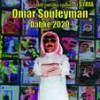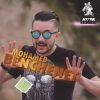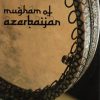 ペルシャ語で「三弦」を意味する楽器セタールは、長いネックと丸いボディを持つリュート族の弦楽器。同様の楽器は西アジアや中東の国々で様々な形で見受けられますが、セタールはイラン高地の中央部の音楽で使用されます。現在の形になったのは長い年月の音楽的な変遷であると思われますが、Dervish Moshtaq-Ali Shahによって4本目のドローン弦(Moshtaqの弦)が加えられ、本来の楽器名の意味とは違ってしまいましたが、音色が良くなりさらにこの楽器が広まることになったそうです。伝統音楽と現代的音楽のどちらにも合うタールに比べて、セタールはより神秘的で身分の高い人々が好む音楽の演奏に限られてということです。確かに、本アルバムに収録された音源はタールのものに比べ、ドローン弦の効果か煌びやかな中にも落ち着きを感じさせてくれます。曲調自体も練られたものが多いように思います。
ペルシャ語で「三弦」を意味する楽器セタールは、長いネックと丸いボディを持つリュート族の弦楽器。同様の楽器は西アジアや中東の国々で様々な形で見受けられますが、セタールはイラン高地の中央部の音楽で使用されます。現在の形になったのは長い年月の音楽的な変遷であると思われますが、Dervish Moshtaq-Ali Shahによって4本目のドローン弦(Moshtaqの弦)が加えられ、本来の楽器名の意味とは違ってしまいましたが、音色が良くなりさらにこの楽器が広まることになったそうです。伝統音楽と現代的音楽のどちらにも合うタールに比べて、セタールはより神秘的で身分の高い人々が好む音楽の演奏に限られてということです。確かに、本アルバムに収録された音源はタールのものに比べ、ドローン弦の効果か煌びやかな中にも落ち着きを感じさせてくれます。曲調自体も練られたものが多いように思います。
タール奏者が、2番目の楽器ということでセタールを習得することも多いようで、本アルバムの1曲目に収録のAli-Naqi Vaziri (1887-1979)は、タール奏者としても有名です。
本2枚組アルバムは、多分1930年代以降1990年代までの録音を集めたものと思われますが、世代によって発展していく演奏法もじっくりと楽しめます。(サプライヤーインフォより)
Setar : Ali Naqi Vaziri , Abdollah Dadvar , Yusef Foroutan , Saeed Hormozi , Abolhasan Saba ,
Arsalan Dargahi , Moshi Moazzam Afshar , Ahamd Ebadi , Nur Ali Boroumand , Hasan Ali Daftari ,
Mamoud Tajbakhsh , Daryoush Safvat , Jalal Zolfonoun , Mohammad Reza Lotfi , Hoseyn Alizadeh , Daryoush Talai
Setar (i.e. “three strings”) is one of the members of the lute family. This large family of chordophones includes numerous instruments with different sizes and shapes that are found in many countries in western Asia and in the Middle East, however, setar as we know in the Persian music is now restricted to the central parts of the Iranian plateau. It seems that its present shape is the RESULT of a long period of evolution both in morphology and in sonority. It was known previously as sesim (i.e. “three strings”) but from two and a half centuries age Dervish Moshtaq-Ali Shah from Kerman added a fourth drone string to it and called it sim-e moshtaq (i.e. string of Moshtaq). To be precise, it is the white string between the yellow and the bass strings. Though his contribution contradicted with the nomenclature of the INSTRUMENT, it improved its sonority further and became finally popular.
In comparison with tar that was proper enough to serve both in classical music and light Motrebi music, setar became restricted to the circles of mystics, people of high class and music connoisseurs. Its thin sonority deprived it from being applied to Motrebi music. Apparent ease in learning and playing setar, especially for those acquainted previously with tar, it was regarded for a while as the second instrument to the majority of tar-players and other instrumentalists. This was the cause of a common negligence of its playing techniques. As it might be expected, the technique of playing any individual instrument is transferred from a generation to the next. Meanwhile the technique is always associated with morphologic characters of each instrument.

 OMAR SOULEYMAN / DABKE 2020
OMAR SOULEYMAN / DABKE 2020 HAALE / MORNING
HAALE / MORNING MOHAMED BENCHENET / (NO TITLE)
MOHAMED BENCHENET / (NO TITLE) V.A. / MUGHAM OF AZERBAIJAN
V.A. / MUGHAM OF AZERBAIJAN